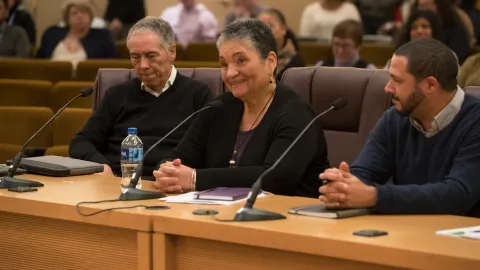Background and purpose statement of the Workforce Equity Strategies document submitted by Frances E. Jemmott, CEO Jemmott Rollins Group, Inc. to Multnomah County Chief Operating Officer Marissa Madrigal

Considerable research documents the negative socioeconomic impact of inequity. National experts and field practitioners have concluded that discriminatory practices, whether intentional or not, damage specific population groups, entire organizations and communities overall. One such expert, Glenn Harris, President of the Center for Social Inclusion stated, “when a system is out of balance, people of color feel the impacts most acutely, but, to be clear, an imbalanced system makes all of us pay.”(1)
Beginning in 2011, Multnomah County Government further engaged staff and community stakeholders in establishing Equity and Inclusion Guidelines. With the development of a robust Equity Lens through which departments were able to examine and implement programs, practices and other improvements, internal Equity Coordinators were hired across various departments, and other improvements were made to enhance organizational culture and the management of complaints. Significantly, the Office of Diversity and Equity (ODE) was created and staffed out of the Office of the Chair of the County Board of Commissioners. Employee Resource Groups (ERGs) were established or reinvigorated to offer networking and social support structures and have been instrumental over a number of years in impacting policies and practices across the organization. These groups, by policy, provide dedicated space for “employees with disabilities, immigrant and refugee employees, LGBTQ employees, employees and managers of color, Veterans, families, and older adults.” ERGs generally contributed to Multnomah County’s cultural landscape to benefit its workforce. They often rally around a common agenda to strengthen the County’s commitments to equity, inclusion and diversity.
This discussion is not new for Multnomah County. In June 2016, the Metropolitan Workforce Equity Coalition, along with the Chief Operating Officer, Chief Human Resources Officer and Chief Diversity and Equity Officer presented to the Board of Commissioners high-level approaches for workforce equity, setting an initial foundation for subsequent work to come. Amidst considerable progress and new opportunities for previously unheard voices to be reflected in policy action, disturbing setbacks surfaced in the 2017 Human Resources Trends Report as well. Those developments increased skepticism and disbelief that Multnomah County Government was committed to a robust workforce equity agenda, and as James Baldwin and Martin Luther King, Jr. often reminded, government creeds and deeds have to be aligned more fully to gain workers’ as well as public support. Staff also stayed abreast of the local community’s discussions on racial disparities in relation to employment. Taking all of this into account, County leaders and employees designed the Workforce Equity Strategic Plan (WESP), which was presented to and subsequently approved by the Board of County Commissioners (Board) on April 4, 2018. As a result of the employment trends study and strategies outlined in the WESP, the Chair determined that expert consultation was necessary to address concerns raised by the Employees of Color (EOC), the Employee Resource Groups (ERG), Office of Diversity and Equity (ODE) and the community. With some urgency, the Board authorized expenditures for conditions surrounding the identified setbacks to include recommendations for actions and accountability for implementation to be undertaken.
A contract was awarded to Jemmott Rollins Group (JRG) of Los Angeles, California, after a competitive bidding process. Work began in March of 2018 and concludes with the presentation of this report in final form to the Board of County Commissioners in October of 2018.
Complementing the WESP, the work reported in this document is grounded in the recognition and need for additional focus on equity issues. Therefore, one purpose of the document is to address workforce equity issues that surfaced in the 2017 HR Trends Report. The overall goal of the report is to provide recommendations that strengthen oversight and accountability, clarify management and supervision, overcome structural impediments and improve the complaints process.
1. Glenn Harris, Center for Social Inclusion, https://www.centerforsocialinclusion.org/our-work/what-is-racial-equity/ (accessed August 3, 2018).
